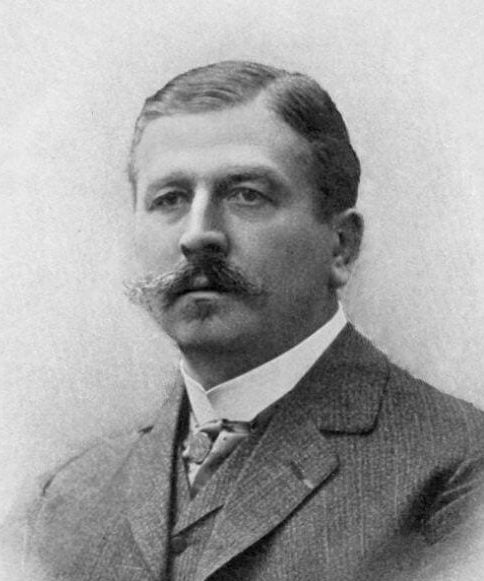 |
| Joseph Babinski. Portrait by Deschiens. US National Library of Medicine. Via Wikimedia. Public domain. |
In 1848 populist revolutions swept across Europe, in Germany, France, and Italy—and also in Poland, where an uprising to gain independence from Russia was ruthlessly suppressed. To escape the repression that followed, Aleksander and Henryieta Babinski fled to France. Their son Joseph was born there in 1857, in Paris—not in Poland or even in Chile as some historians have claimed. Graduating in medicine (1884) with a thesis on multiple sclerosis, Joseph obtained a position at the Salpetriere Hospital. This was at the time the pinnacle of neurology that gave rise to many famous neurologists still remembered today, mostly working under the great Jean Charcot.
Babinski was one of Charcot’s favorite pupils, but falling victim to the rivalry between Charcot and one of his former pupils, his appointment as professor was blocked and he lost his position after the death of Charcot in 1893. He then became chief of service at the Hôpital de la Pitie, where he devoted himself to clinical neurology, wrote some 200 papers and even a play, served in World War I, and died in 1932 at age seventy-four from Parkinson’s disease.
Paradoxically, Babinski is now better remembered than Charcot. This is largely for recognizing the significance of a physical sign that had been noted before, widely still referred to as the Babinski sign, consisting of the big toe moving up on stroking the outside (lateral aspect) of the sole; and indicating a lesion of the pyramidal or cortico-spinal tracts that control motion in the lower extremities. The test does not apply to babies, because their nervous system is still immature. Beyond that it is still part of the modern physical examination, routinely looked for by neurologists and general physicians who may have no idea who Joseph Babinski was.
It has been reported that Babinski differed with his chief in that Charcot believed that the medical history was the most important in making a diagnosis whereas Babinski put more emphasis on the physical examination. Taciturn by nature he was totally silent as he examined the completely undressed patient with great care in order to localize the site of the neurologic lesion by eliciting the appropriate physical signs.
Babinski differed with his chief on whether hysteria was functional organic, believing that Charcot had invented this entity as an organic neurologic disease. He made many other advances in neurology and has his name attached eponymously to at least seven syndromes, including Frohlich’s disease, the Argyll Robertson pupil of neurosyphilis, and several lesions of the medulla, brain stem, peripheral nerves, and muscles. He is one of the fathers of that great neurology tradition that for almost a century prided itself in relying for answers on a very detailed clinical examination, this at a time when ancillary investigations were still in their infancy.
GEORGE DUNEA, MD, Editor-in-Chief
Highlighted in Frontispiece Summer 2017 – Volume 9, Issue 3
Spring 2017 | Sections | Neurology

Leave a Reply